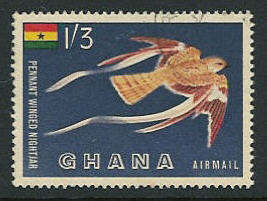For the first time ever in Canada, the Whip-poor-will Caprimulgus vociferus has joined the ranks of bird species facing declines in their populations. At their annual meeting in April, 2009 the Committee on the Status of Endangered Wildlife in Canada, or COSEWIC, recommended that the Whippoorwill be added to Canada's list of species at risk. Their recommendation is based on a 10% decline over the past decade for the species due to declining habitat and fluctuating insect populations.
The Whip-poor-will, named for its trademark call, is often associated with cottage country in Ontario, especially habitats containing rocky or sandy barrens with scattered trees. This elusive bird generally remains quiet during the day, finding a branch or spot on the ground where the bird's plumage provides camoflauge. When darkness falls, it searches out and devours large winged insects by moonlight.
Because it requires the moon to hunt, the Whip-poor-will lays its eggs in phase with the lunar cycle, so that they hatch about 10 days before the full moon. This allows the adults more time to forage for themselves and their nestlings.
According to the Ontario Breeding Bird Atlas, Whip-poor-wills nest primarily in a band along the southern edge of the Canadian Shield stretching from Georgian Bay to eastern Lake Ontario. The Atlas attributes their shrinking range to habitat loss to intensive agricultural use in Southwestern Ontario, and forest succession further north. On-going pesticide use in the bird's wintering grounds may be also a factor.
This is only one of a series of bird species that seem to be showing effects from fewer insects for their diet.
Source: THE LINDSAY POST
http://www.thepost.ca/ArticleDisplay.aspx?e=2508810&archive=true

- Login om te reageren
